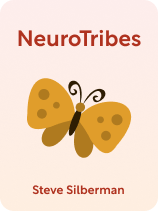

This article is an excerpt from the Shortform book guide to "NeuroTribes" by Steve Silberman. Shortform has the world's best summaries and analyses of books you should be reading.
Like this article? Sign up for a free trial here.
Is there a cure for autism? What can society do to be more accommodating to autistic individuals?
In his book NeuroTribes, Steve Silberman explains that there is no cure for autism. He instead explains how society should focus on making more inclusive environments and safe spaces for those with autism.
Here are Silberman’s thoughts on autism inclusivity.
The True Treatment for Autism
While there is no cure for autism, Silberman suggests that the only “cure” is support and community: Autistic people need to be able to connect with people like them and have access to environments conducive to their needs and strengths. In this section, we’ll describe some ways autistic people have found to create their own spaces and communities throughout recent history, including fandoms, events designed for autistic people, and online communities. Then, we’ll explain Silberman’s suggestions for how society can create more inclusive environments for autistic people.
(Shortform note: As Silberman implies, an autistic person’s environment can heavily impact their functioning and well-being. This has led some people to argue that autism isn’t a disability—rather, society causes it to be disabling by failing to accommodate the unique needs it entails. This perspective is known as the social model of disability—as opposed to the medical model of disability, which argues that the impairments that come with a condition like autism are inherently disabling.)
Creating Autistic Space
Silberman explains that the advent of the sci-fi genre of literature in the mid-20th century gave many autistic people a way to connect with each other, giving rise to the first fandom. Reading is a common passion for autistic people, and Silberman suggests autistic people are drawn to the sci-fi genre because it offers membership in a group with its own jargon, rituals, and common ideas.
(Shortform note: Autistic people often use their interests to bond with others. In fact, research shows the parts of an allistic person’s brain that tend to be devoted to social processing and behaviors are often dedicated to special interests in autistic people’s brains. If you’re looking for a way to connect with an autistic person, try learning about and asking them about their interests.)
Silberman also emphasizes the importance of “autistic space”: environments that are designed for autistic people’s unique needs and interests. He describes his experience of attending “Autreat,” a yearly retreat created by autistic people for autistic people—for example, attendees were given different colored badges to indicate to others whether they wanted to interact, and people had to ask permission before taking photographs so the flashes wouldn’t trigger seizures for anyone.
At Autreat, Silberman experienced something he’d never experienced before: being an allistic person surrounded by autistic people. This gave him a new understanding of what it might be like to live in a world where the majority of people don’t think the way he does, something autistic people experience every day. He explains that places like Autreat give autistic people the opportunity to be in the majority instead of feeling abnormal or out of place.
(Shortform note: The last Autreat was held in 2013. However, other organizations, such as the Association for Autism and Neurodiversity, hold events and conferences designed (at least in part) for autistic attendees. Parents looking for a dedicated autistic space experience for their children could consider programs like Camp Akeela, which provides children with choice-based activities, a high counselor-camper ratio, and accommodations to suit their neurological needs.)
Many autistic people have also created “autistic spaces” via online communities, where they can communicate in a setting that’s conducive to their sensory needs without feeling pressure to suppress their autistic traits. These online communities have allowed more autistic people to connect with others who share their experiences and ways of processing the world.
(Shortform note: Research suggests that online platforms may be especially appealing to autistic people because they eliminate many aspects of in-person interaction that autistic people struggle with, such as eye contact and small talk. Additionally, online platforms allow people to connect based on special interests regardless of geographic proximity. This can be particularly useful for people with more niche special interests. However, some autistic people report that they prefer in-person interaction—even though it’s more difficult—because they feel less emotionally connected to people they only interact with online, and because online relationships often feel less secure because they can end suddenly and unexpectedly.)
How Society Can Better Accommodate Autistic People
Silberman explains some ways in which society should adapt to support autistic people. For example, schools and workplaces could implement “quiet spaces” where people can get a respite from sensory input. Schools could use technology to provide the mode of instruction that best suits a student’s neurological needs (for example, written instruction versus verbal instruction). They could also give students more control over their learning space by letting them use sunglasses, earplugs, and noise-canceling headphones to manage their sensory input.
(Shortform note: In addition to the methods Silberman outlines, research shows that educators can enhance learning for autistic students by incorporating their special interests into curricula. It can improve motivation, participation, engagement, and—in some cases—communication skills. Teachers can also form stronger connections with students by engaging in their special interests with them. Educators can incorporate special interests into the whole-class curriculum or in individualized tasks for the autistic students; they can also let students engage in their special interests as a reward for completing classroom activities.)
Silberman explains that some groups are already changing how they operate to not only accommodate autistic people but also make the best use of their unique abilities. For example, some employers are replacing in-person interviews with small projects that allow candidates to put their abilities on display (since traditional interviews can be very socially demanding and require people to explain their skills rather than demonstrate them).
(Shortform note: Another way that workplaces can accommodate autistic people is by allowing them to work remotely. Autistic workers report that remote work allows them to better control their environment and avoid distractions, and research shows that it lowers absenteeism and increases employment rates. Some experts also point out that many accommodations for autistic people can benefit all workers, including allistic ones. For example, providing a quiet space for reducing overstimulation can help both autistic people and allistic people manage their emotions and cut down on distractions.)

———End of Preview———
Like what you just read? Read the rest of the world's best book summary and analysis of Steve Silberman's "NeuroTribes" at Shortform.
Here's what you'll find in our full NeuroTribes summary:
- The truth behind the common misconceptions about autism
- How society’s perception of autism has evolved since the 1930s
- The most effective treatments for autism spectrum disorder






